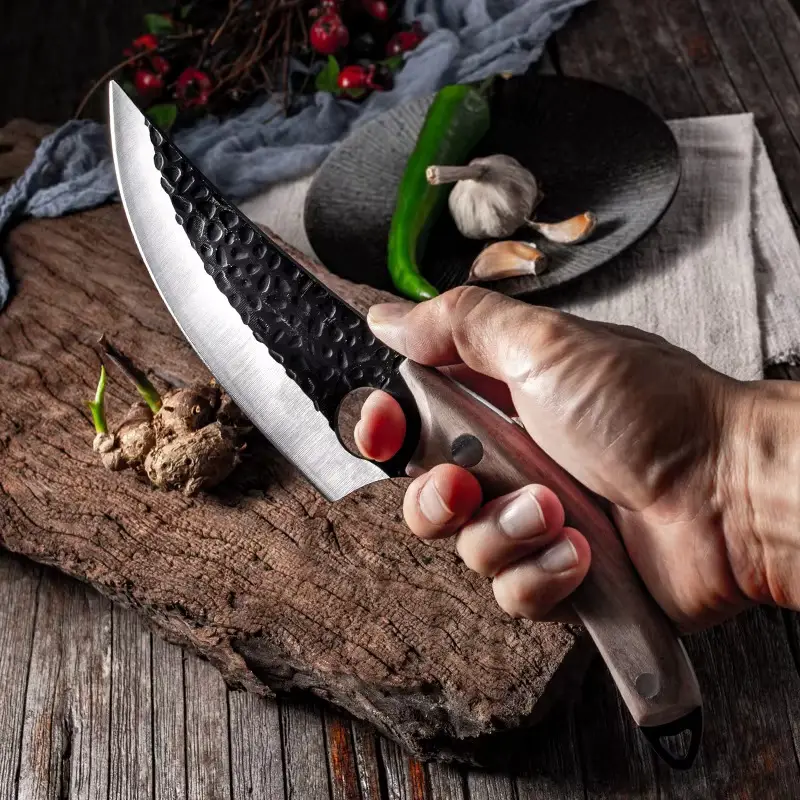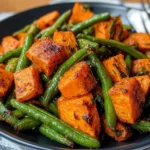Stuffed bell peppers are a dish that always brings a smile to our faces in my household. There’s something so comforting and satisfying about biting into a tender, slightly sweet bell pepper filled with a flavorful and hearty rice and vegetable mixture. It’s a recipe I stumbled upon years ago when looking for a way to incorporate more vegetables into our meals, and it has since become a regular feature on our dinner table. Even my kids, who can be picky eaters, devour these vibrant peppers, often asking for seconds! The beauty of this recipe lies in its versatility and simplicity. You can easily adapt it to whatever vegetables you have on hand, making it a fantastic way to reduce food waste and get creative in the kitchen. Whether you’re looking for a healthy weeknight dinner, a vegetarian option for a gathering, or simply want to enjoy a delicious and wholesome meal, these Stuffed Bell Peppers with Rice and Veggies are a guaranteed winner. Get ready to experience a burst of flavors and textures in every bite – this is more than just a recipe; it’s a comforting and nutritious meal that will quickly become a family favorite.
Ingredients for Vegetarian Stuffed Bell Peppers
- Bell Peppers: 6 large bell peppers (various colors like red, yellow, orange, and green for visual appeal and slightly different flavor profiles). Choose peppers that are firm and evenly shaped to stand upright nicely after stuffing.
- Cooked Rice: 2 cups cooked brown rice (long-grain or basmati rice work well; brown rice adds a nutty flavor and fiber). Ensure the rice is cooked until fluffy and slightly cooled before mixing with other ingredients.
- Onion: 1 medium yellow onion (diced, provides a foundational savory flavor). Yellow onions are versatile and mellow when cooked, making them a great base for the stuffing.
- Carrots: 2 medium carrots (diced, adds sweetness and texture). Carrots contribute sweetness, color, and important nutrients to the filling.
- Celery: 2 stalks of celery (diced, contributes a subtle, savory note and crunch). Celery adds a refreshing, slightly peppery flavor and a pleasant textural contrast.
- Zucchini: 1 medium zucchini (diced, adds moisture and mild flavor). Zucchini is mild and blends well with other flavors, adding moisture and tenderness to the stuffing.
- Corn: 1 cup frozen or canned corn kernels (adds sweetness and pops of flavor). Corn brings a touch of sweetness and a satisfying “pop” in every bite. If using canned, drain it well.
- Black Beans: 1 can (15 ounces) black beans (rinsed and drained, adds protein and fiber). Black beans provide a hearty, earthy flavor and boost the protein and fiber content of the dish.
- Diced Tomatoes: 1 can (14.5 ounces) diced tomatoes (undrained, adds moisture and acidity). Diced tomatoes add moisture, acidity, and a vibrant tomato flavor to the stuffing.
- Tomato Paste: 2 tablespoons tomato paste (concentrated tomato flavor, enhances richness). Tomato paste intensifies the tomato flavor and adds depth and richness to the overall filling.
- Vegetable Broth: 1 cup vegetable broth (adds moisture for cooking and flavor depth). Vegetable broth adds moisture during baking and enhances the savory flavors of the vegetables.
- Olive Oil: 2 tablespoons olive oil (for sautéing vegetables and adding richness). Olive oil is used for sautéing vegetables, adding healthy fats and flavor to the dish.
- Garlic: 3 cloves garlic (minced, essential for savory flavor). Garlic is a flavor powerhouse, adding a pungent and aromatic note to the stuffing.
- Italian Seasoning: 2 teaspoons Italian seasoning (blend of herbs for classic flavor). Italian seasoning provides a classic Mediterranean herb blend that complements the vegetables and rice perfectly.
- Smoked Paprika: 1 teaspoon smoked paprika (adds smoky depth of flavor). Smoked paprika lends a subtle smokiness and warmth to the filling, enhancing its complexity.
- Salt and Black Pepper: To taste (essential for seasoning and balancing flavors). Salt and pepper are crucial for seasoning the vegetables and bringing out their natural flavors.
- Shredded Cheese (Optional): 1 cup shredded mozzarella or cheddar cheese (for topping, adds cheesy flavor and melty texture). Cheese adds a creamy, melty topping and extra flavor. For a vegan option, use plant-based cheese.
- Fresh Parsley (Optional): For garnish (fresh, herbaceous finish). Fresh parsley adds a bright, herbaceous garnish and a touch of freshness to the finished dish.
Instructions for Making Stuffed Bell Peppers
- Prepare the Bell Peppers: Preheat your oven to 375°F (190°C). Carefully wash the bell peppers and cut off the tops, about ½ inch from the stem. Remove the seeds and membranes from inside each pepper. You can chop the pepper tops and reserve them to add to the stuffing mixture for extra flavor and to reduce waste, if desired. If you want the peppers to sit flat, you can carefully slice a very thin sliver off the bottom of each pepper. Be careful not to cut too much or create a hole.
- Sauté Aromatics and Vegetables: Heat olive oil in a large skillet over medium heat. Add the diced onion, carrots, and celery. Sauté for about 5-7 minutes, or until the vegetables start to soften. Stir occasionally to prevent burning and ensure even cooking. These vegetables form the aromatic base of your stuffing, so allow them to soften and release their flavors properly.
- Add Garlic and Zucchini: Add the minced garlic and diced zucchini to the skillet. Cook for another 3-5 minutes, until the garlic is fragrant and the zucchini is slightly tender. Be careful not to burn the garlic; it should become fragrant but not brown.
- Incorporate Tomato Paste and Spices: Stir in the tomato paste, Italian seasoning, and smoked paprika. Cook for 1 minute more, stirring constantly, to toast the spices and deepen the tomato paste’s flavor. Toasting spices enhances their aroma and flavor profile, contributing to a richer and more complex dish.
- Add Remaining Stuffing Ingredients: Add the cooked rice, corn, black beans, diced tomatoes (undrained), and vegetable broth to the skillet. Season with salt and black pepper to taste. Bring the mixture to a simmer, then reduce heat and cook for 5-7 minutes, stirring occasionally, until the flavors have melded together and the mixture has thickened slightly. Simmering allows the flavors to combine and the mixture to reach the right consistency for stuffing.
- Stuff the Bell Peppers: Remove the skillet from the heat. Using a spoon, carefully stuff each bell pepper with the rice and vegetable mixture, packing it in firmly but gently. Don’t overstuff them to the point where they might split during baking. If you reserved the chopped pepper tops, you can mix some into the stuffing or use them to top the peppers before baking.
- Bake the Stuffed Peppers: Place the stuffed bell peppers upright in a baking dish. Add about ½ cup of vegetable broth to the bottom of the baking dish (this prevents the peppers from drying out and creates steam to help them cook). Cover the dish with aluminum foil. Bake for 30 minutes.
- Add Cheese (Optional) and Finish Baking: Remove the foil and sprinkle shredded cheese (if using) over the top of each stuffed pepper. Return the dish to the oven and bake for another 15-20 minutes, or until the peppers are tender and the cheese is melted and bubbly (if using). Baking uncovered for the last part allows the peppers to soften further and the cheese to melt and brown beautifully.
- Rest and Garnish: Let the stuffed bell peppers rest for a few minutes before serving. This allows the filling to set slightly and the peppers to cool down enough to handle. Garnish with fresh parsley, if desired, for a fresh and vibrant finish.
- Serve and Enjoy: Serve the stuffed bell peppers hot, as a main course. They are delicious on their own or with a side salad. Enjoy the flavorful and nutritious stuffed bell peppers!
Nutrition Facts (per serving, approximate)
- Serving Size: 1 stuffed bell pepper
- Calories: Approximately 350-400 kcal (without cheese, may vary based on specific ingredients and portion sizes)
- Protein: 12-15g
Note: Nutritional information is an estimate and can vary based on specific ingredients used and portion sizes. For precise nutritional information, use a nutrition calculator with the specific brands and amounts of ingredients you use.
Preparation Time
- Prep Time: 30 minutes (includes chopping vegetables, preparing peppers, and assembling ingredients)
- Cook Time: 45-50 minutes (includes sautéing vegetables, simmering filling, and baking stuffed peppers)
- Total Time: Approximately 1 hour 15 minutes (from start to finish, including baking time)
This recipe involves about 30 minutes of active preparation, mainly focused on chopping vegetables and preparing the stuffing. The baking time is largely hands-off, allowing you to prepare side dishes or relax while the stuffed peppers cook in the oven. It’s a manageable recipe for a weeknight dinner, especially if you can prep some of the vegetables in advance.
How to Serve Stuffed Bell Peppers
- As a Main Course: Stuffed bell peppers are substantial enough to be a satisfying and complete meal on their own, especially for a vegetarian dinner.
- With a Side Salad: A fresh green salad with a light vinaigrette complements the richness of the stuffed peppers and adds a refreshing element to the meal. Consider a simple mixed greens salad, a cucumber and tomato salad, or a Mediterranean-style salad.
- Alongside Crusty Bread: Serve with a side of warm, crusty bread or garlic bread for soaking up any extra sauce from the baking dish and adding a satisfying carbohydrate element to the meal.
- With a Dollop of Yogurt or Sour Cream (Optional): A dollop of plain Greek yogurt or sour cream can add a creamy coolness that contrasts nicely with the warm, savory peppers. For a vegan option, use plant-based yogurt or cashew cream.
- As Part of a Vegetarian Feast: Include stuffed bell peppers as part of a larger vegetarian spread, alongside other vegetable-based dishes like roasted vegetables, lentil soup, or a grain-based salad for a diverse and flavorful meal.
- Reheated for Lunch the Next Day: Stuffed bell peppers are excellent leftovers and reheat well. They make a fantastic and convenient lunch the next day, either warmed up in the microwave or oven.
Additional Tips for Perfect Stuffed Bell Peppers
- Choose the Right Peppers: Select bell peppers that are firm, brightly colored, and relatively uniform in shape. Peppers with flat bottoms will stand up more easily in the baking dish. Different colored peppers offer slightly different flavors; red and yellow peppers tend to be sweeter, while green peppers are slightly more bitter.
- Pre-Cook the Rice Properly: Ensure your rice is cooked until fluffy and slightly cooled before adding it to the stuffing mixture. Overcooked or mushy rice can make the stuffing texture unpleasant. Brown rice is recommended for its nutritional benefits and nutty flavor, but white rice or quinoa can also be used.
- Don’t Overstuff the Peppers: While you want to fill the peppers generously, avoid overstuffing them to the point where they might burst during baking. Leave a little space at the top to allow for expansion of the filling as it cooks.
- Customize Your Vegetables: Feel free to adapt the vegetable mixture to your liking and what you have on hand. Mushrooms, spinach, diced eggplant, or other vegetables can be added or substituted. Roasted vegetables can also be incorporated for a deeper flavor.
- Add Protein Boosters: For a more protein-rich meal, consider adding lentils, crumbled tempeh, or cooked quinoa to the stuffing mixture in addition to or instead of the black beans. You can also add nuts or seeds for extra protein and texture.
- Spice it Up: If you like a bit of heat, add a pinch of red pepper flakes, a diced jalapeño, or a dash of hot sauce to the stuffing mixture. You can also use spicier varieties of paprika, like hot paprika, for a more intense flavor.
- Make Ahead for Convenience: You can prepare the stuffing mixture and stuff the peppers ahead of time. Store them covered in the refrigerator for up to 24 hours and bake them just before serving. This is a great way to break up the cooking process, especially for busy weeknights or when entertaining.
- Broil for Extra Browning (Optional): For extra browning and a slightly crispy cheese topping, you can broil the stuffed peppers for the last 2-3 minutes of baking. Watch them carefully to prevent burning, especially the cheese. Broiling adds a nice textural contrast and visual appeal.
FAQ About Stuffed Bell Peppers with Rice and Veggies
Q1: Can I make these stuffed peppers vegan?
A: Yes, absolutely! To make these stuffed peppers vegan, simply omit the cheese topping or use a plant-based shredded cheese alternative. Ensure all other ingredients, like vegetable broth and tomato paste, are also vegan-friendly. The base recipe is naturally vegetarian and easily adaptable to be fully vegan.
Q2: Can I use different types of rice?
A: Yes, you can use different types of rice. Brown rice is recommended for its nutritional value and nutty flavor, but white rice, basmati rice, or even quinoa can be used. Keep in mind that cooking times for different types of rice may vary, so ensure your rice is cooked properly before adding it to the stuffing mixture.
Q3: Can I freeze stuffed bell peppers?
A: Yes, stuffed bell peppers freeze well. Allow the baked stuffed peppers to cool completely. Wrap each pepper individually in plastic wrap and then place them in a freezer-safe bag or container. They can be frozen for up to 2-3 months. To reheat, thaw them in the refrigerator overnight and then bake them in a preheated oven at 350°F (175°C) until heated through, usually about 20-30 minutes.
Q4: What other vegetables can I add to the stuffing?
A: The possibilities are endless! You can add mushrooms, spinach, eggplant, diced sweet potatoes, butternut squash, cauliflower rice, or any other vegetables you enjoy. Roasted vegetables, like roasted red peppers or zucchini, can also add a deeper flavor dimension to the stuffing.
Q5: Can I prepare the stuffing ahead of time?
A: Yes, you can prepare the stuffing mixture up to a day in advance. Cook the stuffing according to the instructions, let it cool, and store it covered in the refrigerator. When you’re ready to bake the stuffed peppers, simply stuff the peppers and proceed with the baking instructions.
Q6: How do I prevent the bell peppers from becoming soggy?
A: To prevent soggy bell peppers, avoid overfilling the baking dish with too much liquid. Adding just ½ cup of vegetable broth to the bottom of the dish is usually sufficient to create steam and prevent drying. Also, ensure you bake them at the correct temperature and for the recommended time. Overbaking can sometimes lead to softer peppers.
Q7: Can I make this recipe gluten-free?
A: Yes, this recipe is naturally gluten-free as long as you ensure that your vegetable broth and any canned tomatoes are certified gluten-free. Rice, vegetables, and beans are all gluten-free ingredients.
Q8: What if I don’t have Italian seasoning?
A: If you don’t have Italian seasoning, you can create your own blend using a combination of dried oregano, basil, thyme, rosemary, and marjoram. A good starting point is to use equal parts of each herb. You can also substitute with other herb blends like Mediterranean seasoning or simply use a combination of your favorite dried herbs.

Stuffed Bell Peppers with Rice and Veggies
Ingredients
- Bell Peppers: 6 large bell peppers (various colors like red, yellow, orange, and green for visual appeal and slightly different flavor profiles). Choose peppers that are firm and evenly shaped to stand upright nicely after stuffing.
- Cooked Rice: 2 cups cooked brown rice (long-grain or basmati rice work well; brown rice adds a nutty flavor and fiber). Ensure the rice is cooked until fluffy and slightly cooled before mixing with other ingredients.
- Onion: 1 medium yellow onion (diced, provides a foundational savory flavor). Yellow onions are versatile and mellow when cooked, making them a great base for the stuffing.
- Carrots: 2 medium carrots (diced, adds sweetness and texture). Carrots contribute sweetness, color, and important nutrients to the filling.
- Celery: 2 stalks of celery (diced, contributes a subtle, savory note and crunch). Celery adds a refreshing, slightly peppery flavor and a pleasant textural contrast.
- Zucchini: 1 medium zucchini (diced, adds moisture and mild flavor). Zucchini is mild and blends well with other flavors, adding moisture and tenderness to the stuffing.
- Corn: 1 cup frozen or canned corn kernels (adds sweetness and pops of flavor). Corn brings a touch of sweetness and a satisfying “pop” in every bite. If using canned, drain it well.
- Black Beans: 1 can (15 ounces) black beans (rinsed and drained, adds protein and fiber). Black beans provide a hearty, earthy flavor and boost the protein and fiber content of the dish.
- Diced Tomatoes: 1 can (14.5 ounces) diced tomatoes (undrained, adds moisture and acidity). Diced tomatoes add moisture, acidity, and a vibrant tomato flavor to the stuffing.
- Tomato Paste: 2 tablespoons tomato paste (concentrated tomato flavor, enhances richness). Tomato paste intensifies the tomato flavor and adds depth and richness to the overall filling.
- Vegetable Broth: 1 cup vegetable broth (adds moisture for cooking and flavor depth). Vegetable broth adds moisture during baking and enhances the savory flavors of the vegetables.
- Olive Oil: 2 tablespoons olive oil (for sautéing vegetables and adding richness). Olive oil is used for sautéing vegetables, adding healthy fats and flavor to the dish.
- Garlic: 3 cloves garlic (minced, essential for savory flavor). Garlic is a flavor powerhouse, adding a pungent and aromatic note to the stuffing.
- Italian Seasoning: 2 teaspoons Italian seasoning (blend of herbs for classic flavor). Italian seasoning provides a classic Mediterranean herb blend that complements the vegetables and rice perfectly.
- Smoked Paprika: 1 teaspoon smoked paprika (adds smoky depth of flavor). Smoked paprika lends a subtle smokiness and warmth to the filling, enhancing its complexity.
- Salt and Black Pepper: To taste (essential for seasoning and balancing flavors). Salt and pepper are crucial for seasoning the vegetables and bringing out their natural flavors.
- Shredded Cheese (Optional): 1 cup shredded mozzarella or cheddar cheese (for topping, adds cheesy flavor and melty texture). Cheese adds a creamy, melty topping and extra flavor. For a vegan option, use plant-based cheese.
- Fresh Parsley (Optional): For garnish (fresh, herbaceous finish). Fresh parsley adds a bright, herbaceous garnish and a touch of freshness to the finished dish.
Instructions
- Prepare the Bell Peppers: Preheat your oven to 375°F (190°C). Carefully wash the bell peppers and cut off the tops, about ½ inch from the stem. Remove the seeds and membranes from inside each pepper. You can chop the pepper tops and reserve them to add to the stuffing mixture for extra flavor and to reduce waste, if desired. If you want the peppers to sit flat, you can carefully slice a very thin sliver off the bottom of each pepper. Be careful not to cut too much or create a hole.
- Sauté Aromatics and Vegetables: Heat olive oil in a large skillet over medium heat. Add the diced onion, carrots, and celery. Sauté for about 5-7 minutes, or until the vegetables start to soften. Stir occasionally to prevent burning and ensure even cooking. These vegetables form the aromatic base of your stuffing, so allow them to soften and release their flavors properly.
- Add Garlic and Zucchini: Add the minced garlic and diced zucchini to the skillet. Cook for another 3-5 minutes, until the garlic is fragrant and the zucchini is slightly tender. Be careful not to burn the garlic; it should become fragrant but not brown.
- Incorporate Tomato Paste and Spices: Stir in the tomato paste, Italian seasoning, and smoked paprika. Cook for 1 minute more, stirring constantly, to toast the spices and deepen the tomato paste’s flavor. Toasting spices enhances their aroma and flavor profile, contributing to a richer and more complex dish.
- Add Remaining Stuffing Ingredients: Add the cooked rice, corn, black beans, diced tomatoes (undrained), and vegetable broth to the skillet. Season with salt and black pepper to taste. Bring the mixture to a simmer, then reduce heat and cook for 5-7 minutes, stirring occasionally, until the flavors have melded together and the mixture has thickened slightly. Simmering allows the flavors to combine and the mixture to reach the right consistency for stuffing.
- Stuff the Bell Peppers: Remove the skillet from the heat. Using a spoon, carefully stuff each bell pepper with the rice and vegetable mixture, packing it in firmly but gently. Don’t overstuff them to the point where they might split during baking. If you reserved the chopped pepper tops, you can mix some into the stuffing or use them to top the peppers before baking.
- Bake the Stuffed Peppers: Place the stuffed bell peppers upright in a baking dish. Add about ½ cup of vegetable broth to the bottom of the baking dish (this prevents the peppers from drying out and creates steam to help them cook). Cover the dish with aluminum foil. Bake for 30 minutes.
- Add Cheese (Optional) and Finish Baking: Remove the foil and sprinkle shredded cheese (if using) over the top of each stuffed pepper. Return the dish to the oven and bake for another 15-20 minutes, or until the peppers are tender and the cheese is melted and bubbly (if using). Baking uncovered for the last part allows the peppers to soften further and the cheese to melt and brown beautifully.
- Rest and Garnish: Let the stuffed bell peppers rest for a few minutes before serving. This allows the filling to set slightly and the peppers to cool down enough to handle. Garnish with fresh parsley, if desired, for a fresh and vibrant finish.
- Serve and Enjoy: Serve the stuffed bell peppers hot, as a main course. They are delicious on their own or with a side salad. Enjoy the flavorful and nutritious stuffed bell peppers!
Nutrition
- Serving Size: one normal portion
- Calories: 400
- Protein: 15g






